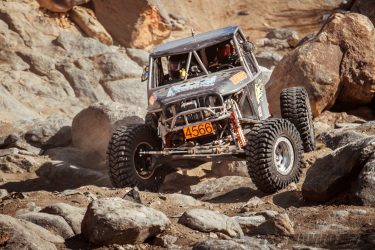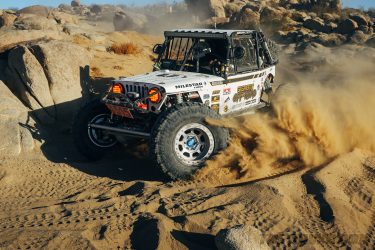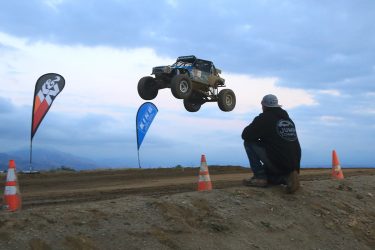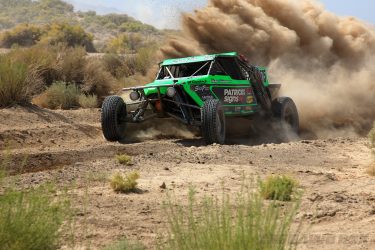UTV World Championship
UTV’s were originally created as a farm implement, but the small, all-purpose machines soon developed into sport models for recreation. They are now dirt rockets with long travel suspensions and surprising performance levels. As they evolved, all types of custom fabricated vehicles and performance parts were created along the way. Inevitably, they wound up racing them in just about every terrain imaginable. One of the biggest events of the year is the Polaris RZR UTV World Championship in Laughlin, Nevada. The prestige of earning a World Championship title draws the fastest racers from many different race series. It’s the only occasion where desert, short course, cross country, and mud bog racers can compete head to head. Defending Best in the Desert champion Phil Blurton, multi-time WORCS champion Beau Baron, and Mud Racing champion Dustin Jones can all line up to do battle with recently crowned King of the Hammers, Mitch Guthrie Jr. One thing that is constant amongst these competitors is that they all strive for excellence, and they all want to be the best of the best.
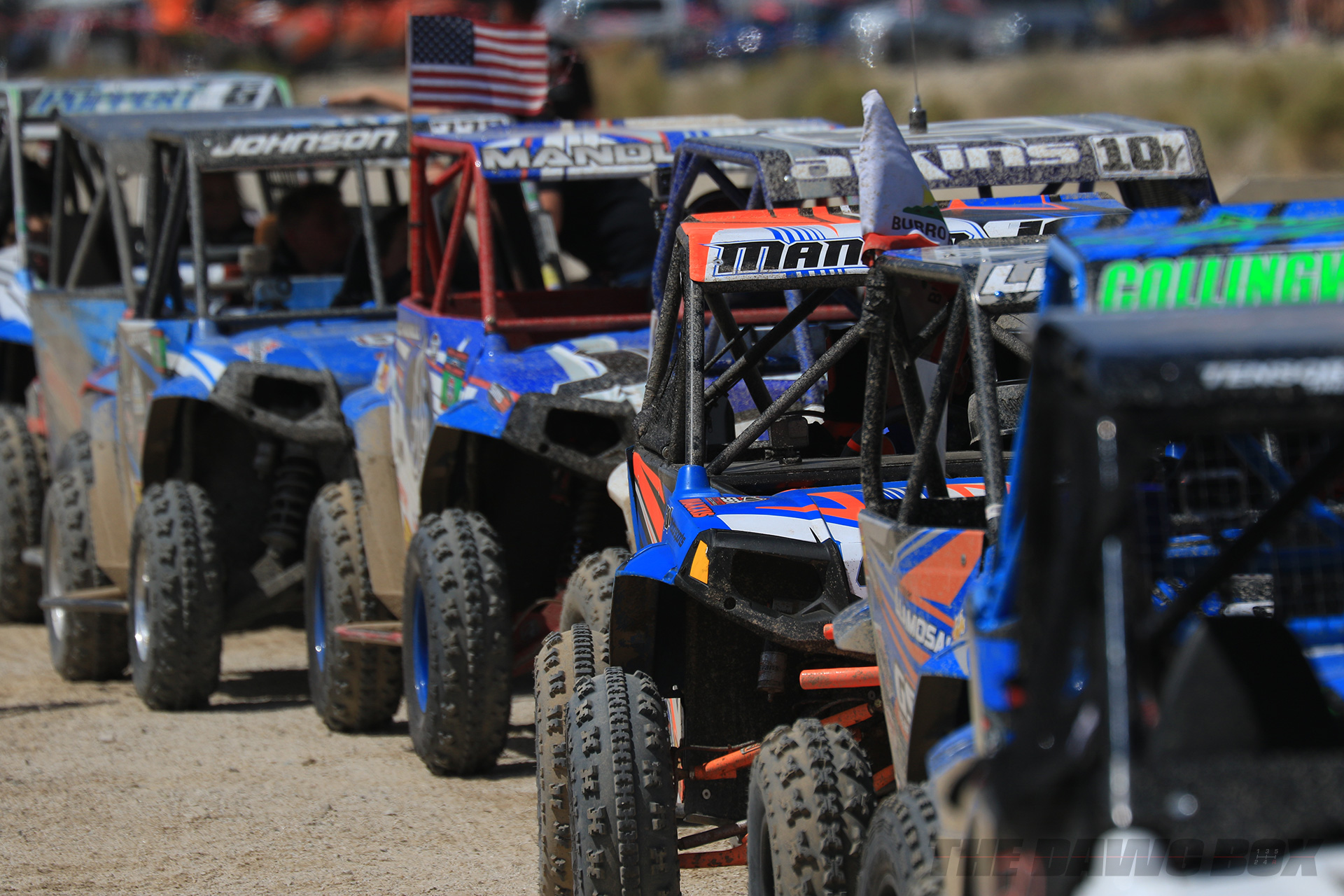
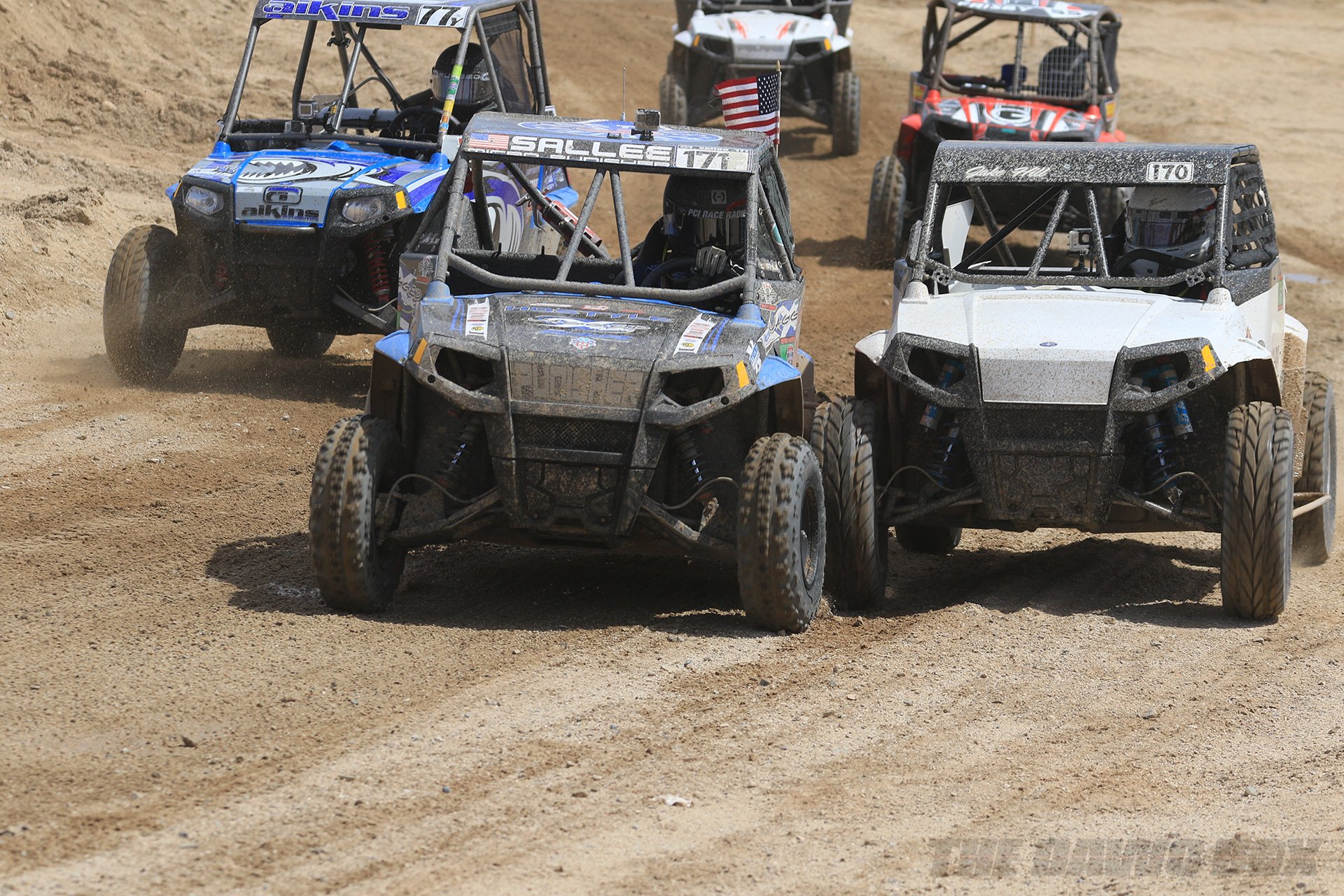
A truly “World Class” race, the UTV World Championships (UTVWC), had a long list of events that attracted a wide range of enthusiasts. Over 10 thousand dollars’ worth of cash and prizes were put up for the UTV driver who flew the farthest during the Laughlin Leap jump contest on Thursday evening. Cole Freiday took the top spot in his Can-Am Maverick X3 with a 117.9-foot leap. You can add jump contests to the long list of racing events that UTV’s are now participating in.
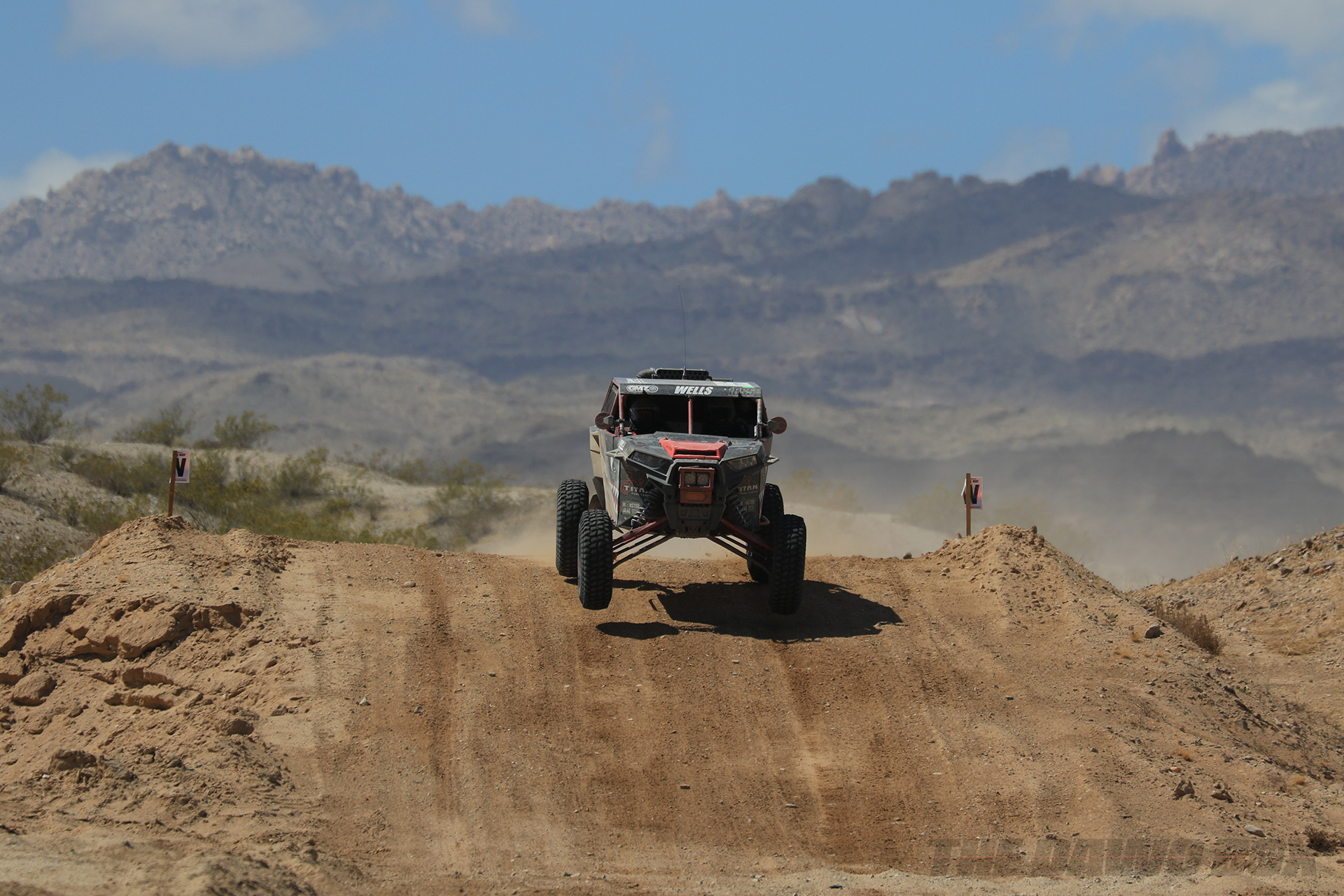
On Friday morning, anyone with a UTV, or similar vehicle, could register for the poker run. The run took place on the actual race course so the public got a good look at what the racers would be subjected to on race day. Racers also took advantage of the run to get their first look at the course as well. Since UTV’s began racing offroad in the desert, traditional desert racers have called them golf carts. At first, the label was somewhat deserved as they were tiny and underpowered. Nowadays the cars are very fast and their dimensions approach the same numbers as other traditional cars. One of the poker run participants that stood out was in fact, a lifted golf cart. The driver was running pretty fast, even if it was done with tongue in cheek. Those not in golf carts were also having a blast. Excessive wheelspin and passengers flashing the bullhorns hand gesture were both prevalent during the poker run.
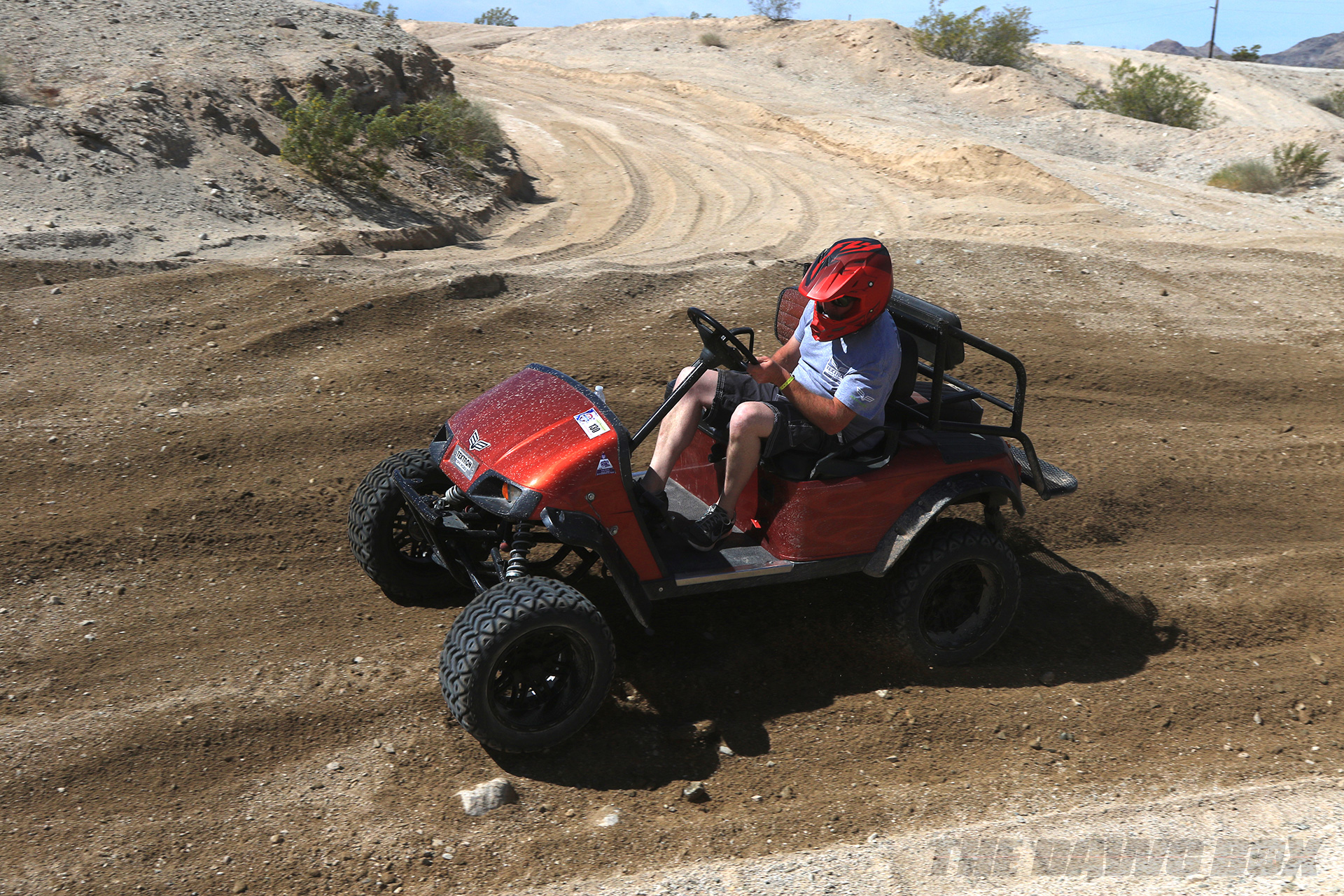
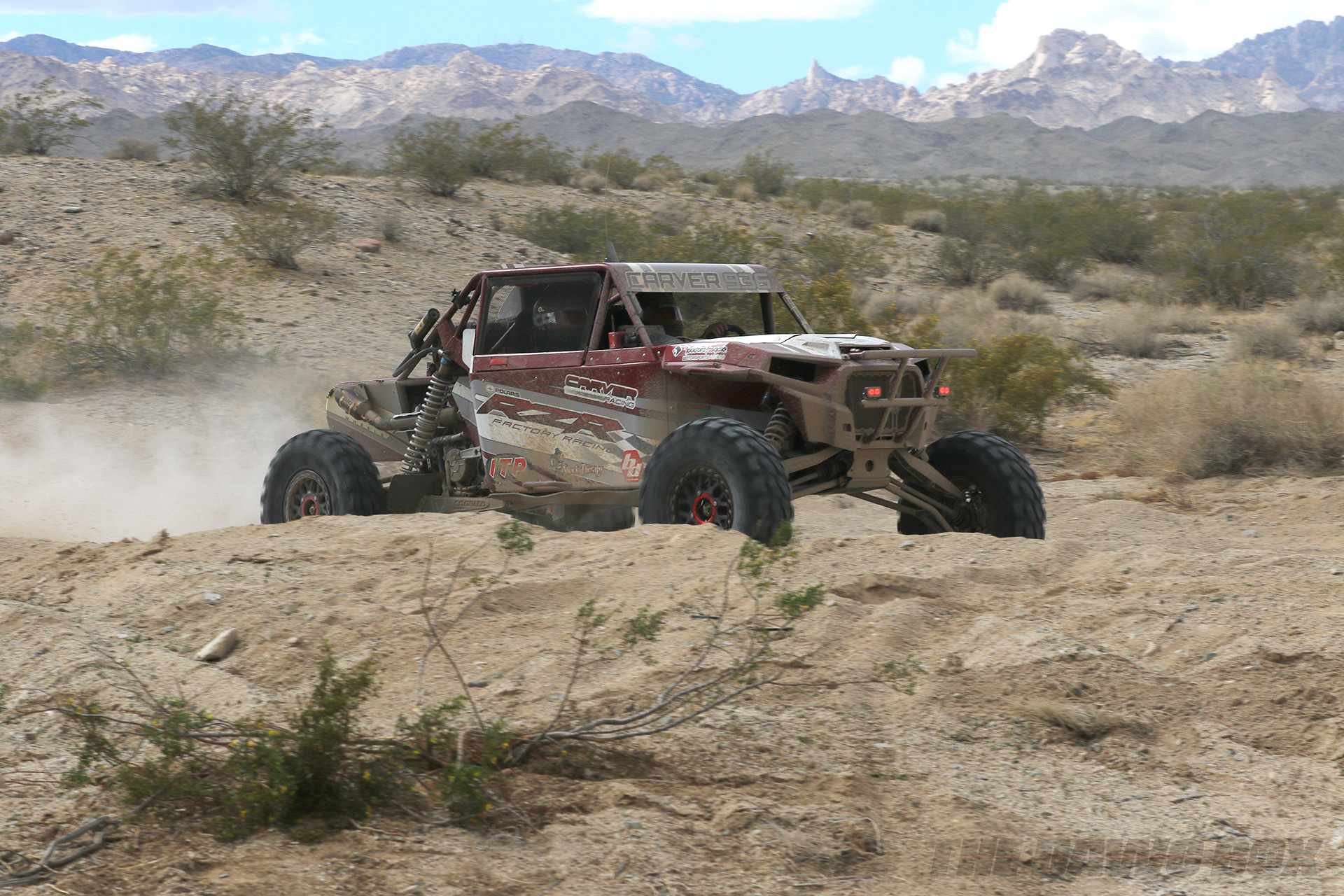
Also on Friday were the kid’s races. It’s amazing to see the next generation of racers developing before your eyes. By the time some of these kids reach double digits in age, they will be considered racing veterans. The kids ran in two classes, 170cc, and the faster 250cc class. Many of these kids already know all the tricks of the trade. It was clear that the last thing you want to do is rub wheels with a driver who is grouchy and probably needs a nap. Despite the bumping, the creative lines designed to run their competitors off the course, and their unwillingness to give an inch, everyone emerged unscathed, and with ear-to-ear grins. 250cc class winner Travis Sallee got the full podium interview and champagne spraying treatment, despite it being sparkling apple cider, to prepare him for future greatness.

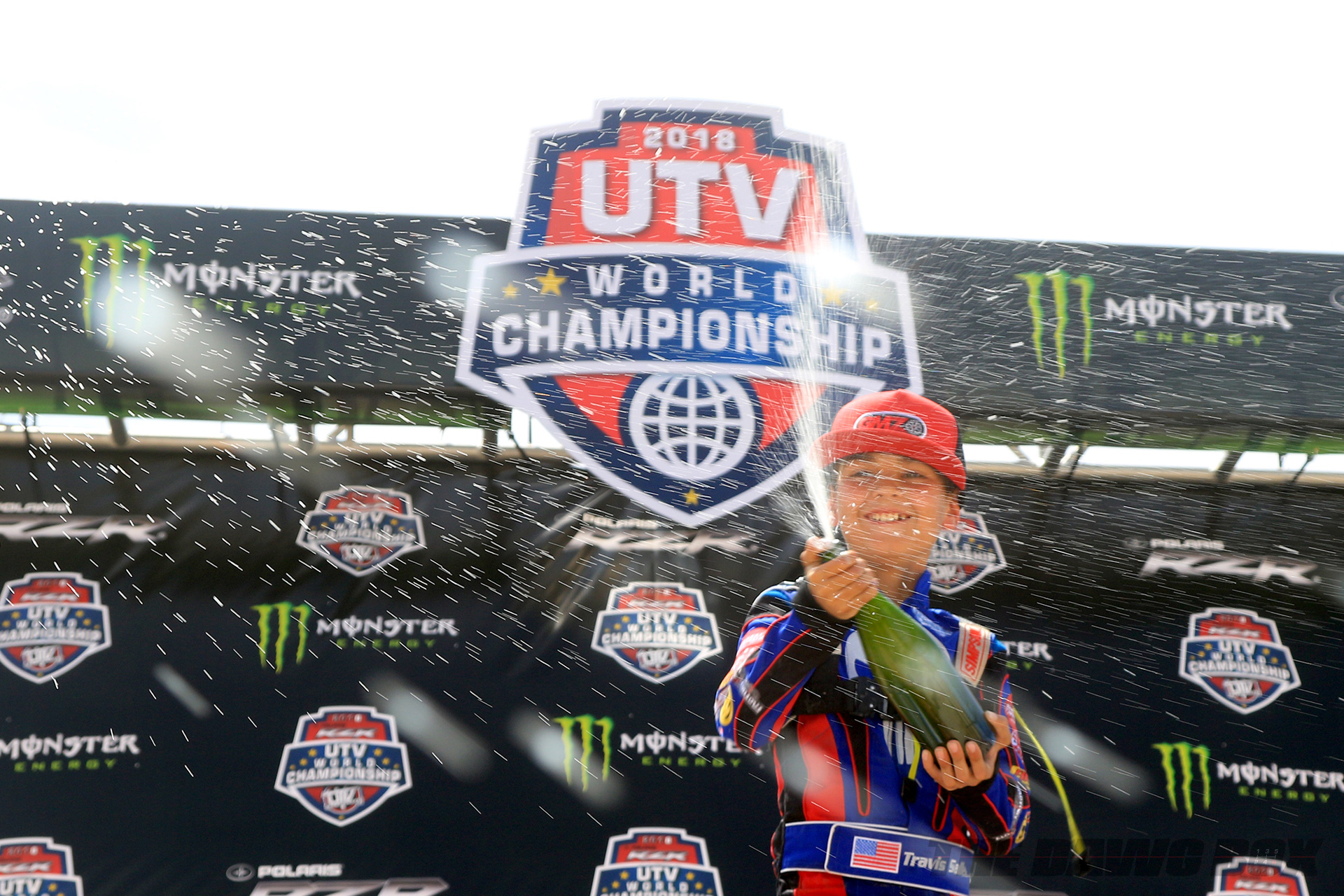
Saturday would be set aside for the big boys. The short course races took place in the morning, and the desert race ran shortly after it concluded. Many competitors jumped out of their short course cars and into their desert cars without even knowing their results from the morning race. Drawing competitors from every discipline imaginable, the field was stacked with talent. Last year, they ran the desert race first, which forced the short course competitors to race on a brutal, whooped out track. Changing the order made the short course guys a little happier, but the Laughlin course was only somewhat better. It still contained plenty of whoops, ruts, and rocks that pound the cars into submission. Another major improvement was the gradual transition from the land rush start, to the standard course width. Last season the track went from 100 feet wide to 20 feet wide in the first turn. It made for a much better start as everyone was able to open their cars up and go all out for the holeshot.
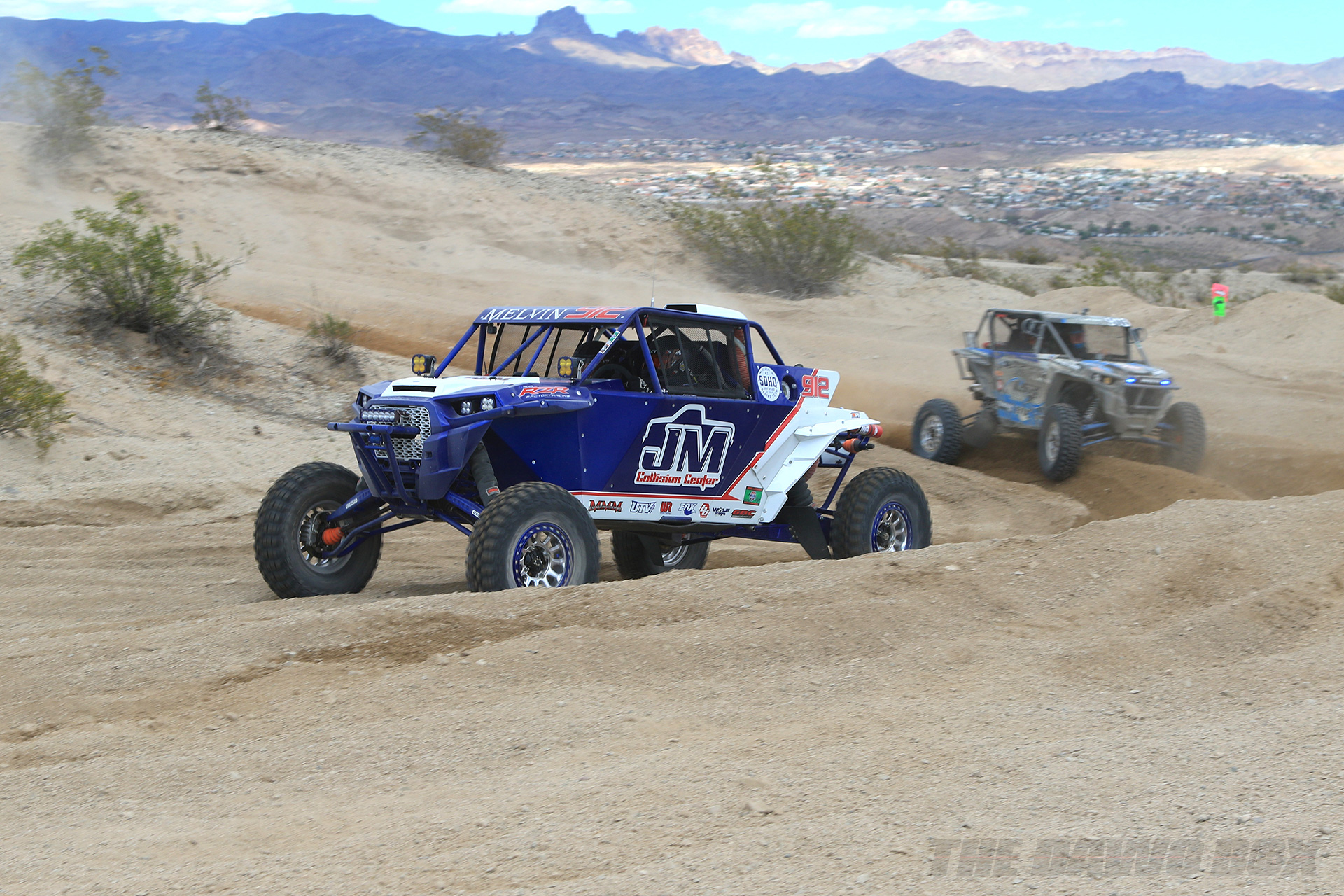
Speaking of holeshots, the short course race winner was Dustin Jones, who got out to the holeshot for the third year in a row. This time, he held off the entire field to take the win. The car he was driving was built in 7 days at the S3 shop. Jones is a mud and woods racing champion from Louisiana. He built his first desert racing car at S3 by reading the rulebook and looking at photos on the internet. Don’t be fooled by his friendly disposition and southern charm, he is super competitive and credits his teammates for driving him to get faster all the time. “The UTV World Championships is the one you really want to win, and part of the reason why I was pushing so hard is because of my teammates, said Jones, “I have 10 guys in the shop who want to win just as bad as I do, and I need to beat them first. We all work hard to get faster every race, and that keeps me at the top of my game.” Jones jumped into his desert car and finished on the podium again, in third place during the desert race. Also getting a third-place podium finish was S3 teammate Logan Brezina who latched onto 2nd place Branden Sims’ bumper after their third row start. “At race mile 5, Sims got past me so I knew he was fast. There was nobody in my mirror, so I figured if I stayed up with him, I would be running a fast enough pace”, said Brezina.

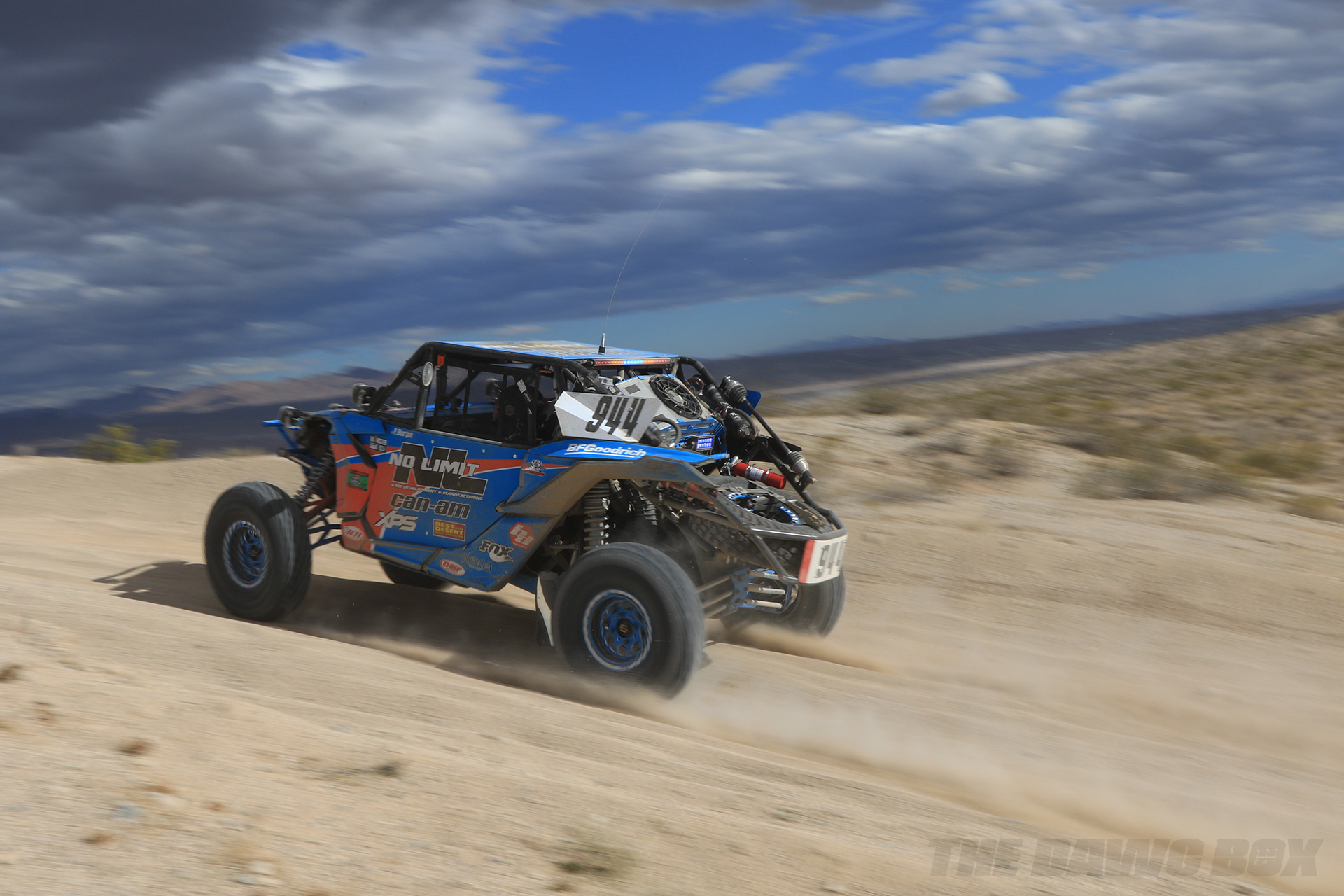
The desert race was 10 laps on the chewed up course. Desert racing courses are always filled with rocks, ruts and whoops, the undulating bumps that torture the cars’ suspensions and drivers’ control, but the frantic pace would take an extraordinary toll on many of the competitors. You had to find the perfect tempo that would beat the competition, without killing the car. Winner Phil Blurton knew this well as he ran the short course race but did not finish. He ran his short course car so hard that he caught the grease in his CV joints on fire. “The course got really rough,” said Blurton, “It was filled with braking and acceleration bumps in addition to the whoops. We were the 5th car into the desert, and we played it smart. The race is not long, but it’s not short either. By mile 7, we were in the lead, and put 7 minutes on second place going into the last lap.” 2nd place in Group D went to Ryan Holz who beat out Jones for the spot.
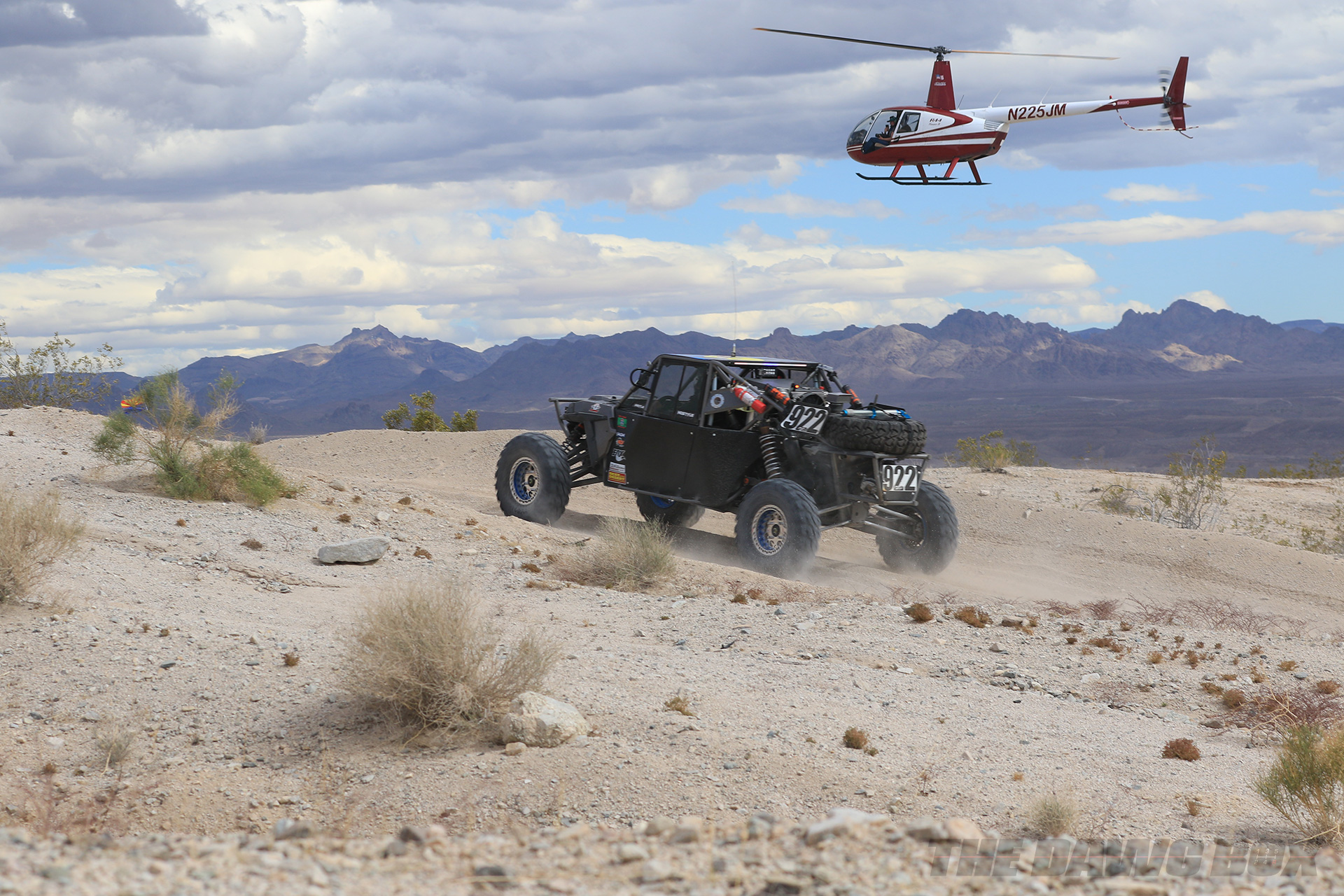

Every year the UTV World Championships get bigger, and if you ask anyone, better. The event attracts the best UTV competitors from every form of racing and has something for everyone. The entire family can compete or hang out with the many fans that come for the fun.


